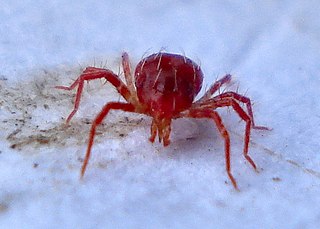Lactiplantibacillus plantarum is a widespread member of the genus Lactiplantibacillus and commonly found in many fermented food products as well as anaerobic plant matter. L. plantarum was first isolated from saliva. Based on its ability to temporarily persist in plants, the insect intestine and in the intestinal tract of vertebrate animals, it was designated as a nomadic organism. L. plantarum is Gram positive, bacilli shaped bacterium. L. plantarum cells are rods with rounded ends, straight, generally 0.9–1.2 μm wide and 3–8 μm long, occurring singly, in pairs or in short chains. L. plantarum has one of the largest genomes known among the lactic acid bacteria and is a very flexible and versatile species. It is estimated to grow between pH 3.4 and 8.8. Lactiplantibacillus plantarum can grow in the temperature range 12 °C to 40 °C. The viable counts of the "L. plantarum" stored at refrigerated condition (4 °C) remained high, while a considerable reduction in the counts was observed stored at room temperature.
BRENDA is the world's most comprehensive online database for functional, biochemical and molecular biological data on enzymes, metabolites and metabolic pathways. It contains data on the properties, function and significance of all enzymes classified by the Enzyme Commission of the International Union of Biochemistry and Molecular Biology (IUBMB). As ELIXIR Core Data Resource and Global Core Biodata Resource, BRENDA is considered a data resource of critical importance to the international life sciences research community. The database compiles a representative overview of enzymes and metabolites using current research data from primary scientific literature and thus serves the purpose of facilitating information retrieval for researchers. BRENDA is subject to the terms of the Creative Commons license, is accessible worldwide and can be used free of charge. As one of the digital resources of the Leibniz Institute DSMZ-German Collection of Microorganisms and Cell Cultures, BRENDA is part of the integrated biodata infrastructure DSMZ Digital Diversity.
The International Code of Nomenclature of Prokaryotes (ICNP) or Prokaryotic Code, formerly the International Code of Nomenclature of Bacteria (ICNB) or Bacteriological Code (BC), governs the scientific names for Bacteria and Archaea. It denotes the rules for naming taxa of bacteria, according to their relative rank. As such it is one of the nomenclature codes of biology.

Shigella boydii is a Gram-negative bacterium of the genus Shigella. Like other members of the genus, S. boydii is a nonmotile, nonsporeforming, rod-shaped bacterium which can cause dysentery in humans through fecal-oral contamination.

The Leibniz Institute DSMZ - German Collection of Microorganisms and Cell Cultures GmbH, located in Braunschweig, is a research infrastructure in the Leibniz Association. Also the DSMZ is the world's most diverse collection of bioresources. These include microorganisms as well as more than 840 human and animal cell cultures, over 1,500 plant viruses, over 940 bacteriophages, and 250 plasmids. Since 2010, the scientific director of the Leibniz Institute DSMZ has been Jörg Overmann, a microbiologist with a PhD from the University of Konstanz. He holds a professorship in microbiology at the Technical University of Braunschweig. Since August 2018, he has led the institute with leadership with Bettina Fischer as administrative director.

Thermococcus gammatolerans is a gram-negative archaeon extremophile and the most radiation-resistant organism known to exist.

Bacterial taxonomy is subfield of taxonomy devoted to the classification of bacteria specimens into taxonomic ranks. Archaeal taxonomy are governed by the same rules.
Afifella is a genus in the phylum Pseudomonadota (Bacteria). Afifella are found in marine and estuarine settings, including microbial mats. They are anaerobes, with one cultured representative capable of photosynthesis.
Dasania is a genus in the phylum Pseudomonadota (Bacteria).

Acaricomes phytoseiuli is a bacterium which is thought to be a pathogen of the mite Phytoseiulus persimilis. A. phytoseiuli causes a set of symptoms in the mite, known as nonresponding syndrome or NR syndrome. Dramatic changes in longevity, fecundity, and behavior are characteristic with this disease. The bacteria accumulate in the lumen of the mite's digestive tract and cause extreme degeneration of its epithelium. Infection with A. phytoseiuli greatly reduces the mite's attraction to herbivore-induced plant volatiles, and the mite is more prone to leave patches with ample prey. The disease is transmitted horizontally by means of feces and debris. The strain that was isolated was “CSC”. Differences between strain CSC compared to its closest phylogenetic neighbors are as follows: CSC uses glucose-1-phosphate and L-glutamic acid, and its colonies are more yellow in appearance as compared to its phylogenetic neighbors which are more cream/white in color.
Bartonella doshiae is a bacterium. As with other Bartonella species, it can cause disease in animals.
Acetobacterium carbinolicum is a homoacetogenic, strictly anaerobic bacterium that oxidises primary aliphatic alcohols.
Kocuria is a genus of gram-positive bacteria. Kocuria is named after Miloslav Kocur, a Czech microbiologist. It has been found in the milk of water deer and reindeer. Cells are coccoid, resembling Staphylococcus and Micrococcus, and can group in pairs, chains, tetrads, cubical arrangements of eight, or irregular clusters. They have rigid cell walls and are either aerobic or facultative anaerobic. Kocuria can usually survive in mesophilic temperatures.
METAGENassist is a freely available web server for comparative metagenomic analysis. Comparative metagenomic studies involve the large-scale comparison of genomic or taxonomic census data from bacterial samples across different environments. Historically this has required a sound knowledge of statistics, computer programming, genetics and microbiology. As a result, only a small number of researchers are routinely able to perform comparative metagenomic studies. To circumvent these limitations, METAGENassist was developed to allow metagenomic analyses to be performed by non-specialists, easily and intuitively over the web. METAGENassist is particularly notable for its rich graphical output and its extensive database of bacterial phenotypic information.
Anaerocolumna aminovalerica is a species of bacteria belonging to the family Lachnospiraceae.
Exiguobacterium undae is a species of Bacilli. Its discovery was published in the International Journal of Systematic and Evolutionary Microbiology. This species has the ability to metabolize arabinose, cellulose, fructose, and glucose. It may undergo fermentation by utilizing D-glucose, D-mannitol, D-ribose, and glycogen. E. undae is motile and it contains peritrichous flagella.

Ligilactobacillus animalis is a non-motile, homofermentative species in the Gram-positive genus Ligilactobacillus, initially isolated from the dental plaque of primates and intestinal samples of a dog and mouse. L. animalis has optimal growth at 37°C on MRS agar, making this species mesophilic. The first reported isolates could ferment cellobiose, fructose, glucose, lactose, maltose, melibiose, raffinose, and salicin, but not xylose. The genome size of the type strain is 1.89 Mbp and the G/C content is 41.1%.
Eubacterium eligens is a motile, obligate anaerobic, Gram-positive, rod-shaped mesophilic bacteria that lives in the human gut microbiome. In 1974, W.E.C Moore and Lillian V. Holdeman isolated and identified over 100 bacterial species from human feces, including E. eligens. The genus Eubacterium inhabits normal gut microbiota and contributes to anti-inflammatory secretions. E. eligens is unlike most Firmicutes species in that it can degrade pectin, which is usually more common among Bacteroidetes.






